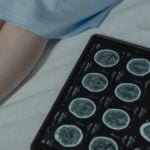
VITAMIN D FOR BACK PAIN? — TIME TO RETHINK THIS PRACTICE
| Contributed by Dr Shariq Masoodi Prof of Endocrinology SKIMS ,Sgr Kashmir Given recent research suggesting no link between vitamin D deficiency and lower back pain, it’s important to re-evaluate current practices regarding vitamin D supplementation in this context. Previously, some healthcare providers might have recommended vitamin D for lower back pain patients if they suspected a deficiency could be contributing to the problem. However, new research indicates that vitamin D supplementation might not be helpful for lower back pain specifically. This highlights the importance of basing treatment decisions on current scientific evidence. While vitamin D has established benefits for bone health and overall well-being, it’s crucial to target supplementation towards conditions where it has a proven positive impact. The #Risk of #Vitamin #D #Intoxication: Furthermore, there’s a potential risk of vitamin D intoxication if excessive supplementation occurs without proper monitoring. Vitamin D is a fat-soluble vitamin, meaning the body stores it instead of excreting any excess through urine. High vitamin D levels can lead to a variety of health problems, including: * Nausea and vomiting * Kidney problems * Increased thirst and urination * Confusion and weakness A More Tailored Approach: Therefore, it’s time to move away from the practice of routinely recommending vitamin D to all low back pain patients without first measuring their vitamin D levels. A more individualized approach is necessary. Here’s how this might look: * Initial Assessment: Healthcare professionals should assess vitamin D levels in patients with lower back pain if there’s a reason to suspect a deficiency (e.g., history of limited sun exposure, certain medical conditions). * Supplementation Based on Need: If a deficiency is identified, then vitamin D supplementation can be prescribed at appropriate doses with monitoring to ensure safe and effective treatment. * Alternative Treatment Options: For lower back pain itself, the focus should shift towards evidence-based treatment options that have been shown to be effective, such as physical therapy, pain medication, or lifestyle modifications. |
Join the mailing list!
Get the latest articles delivered right to your inbox!






